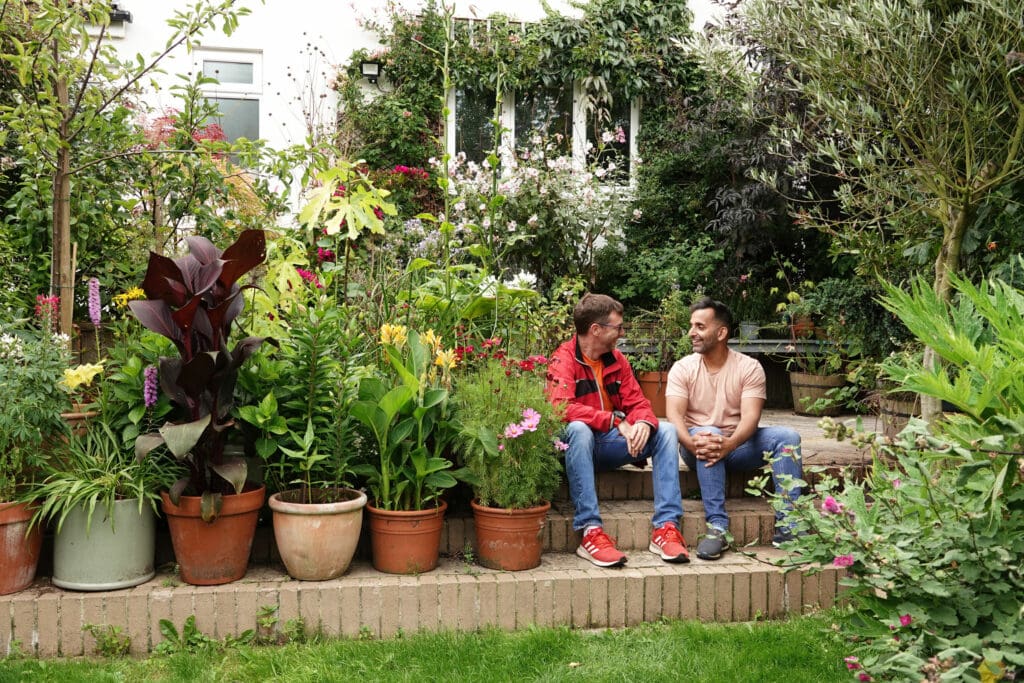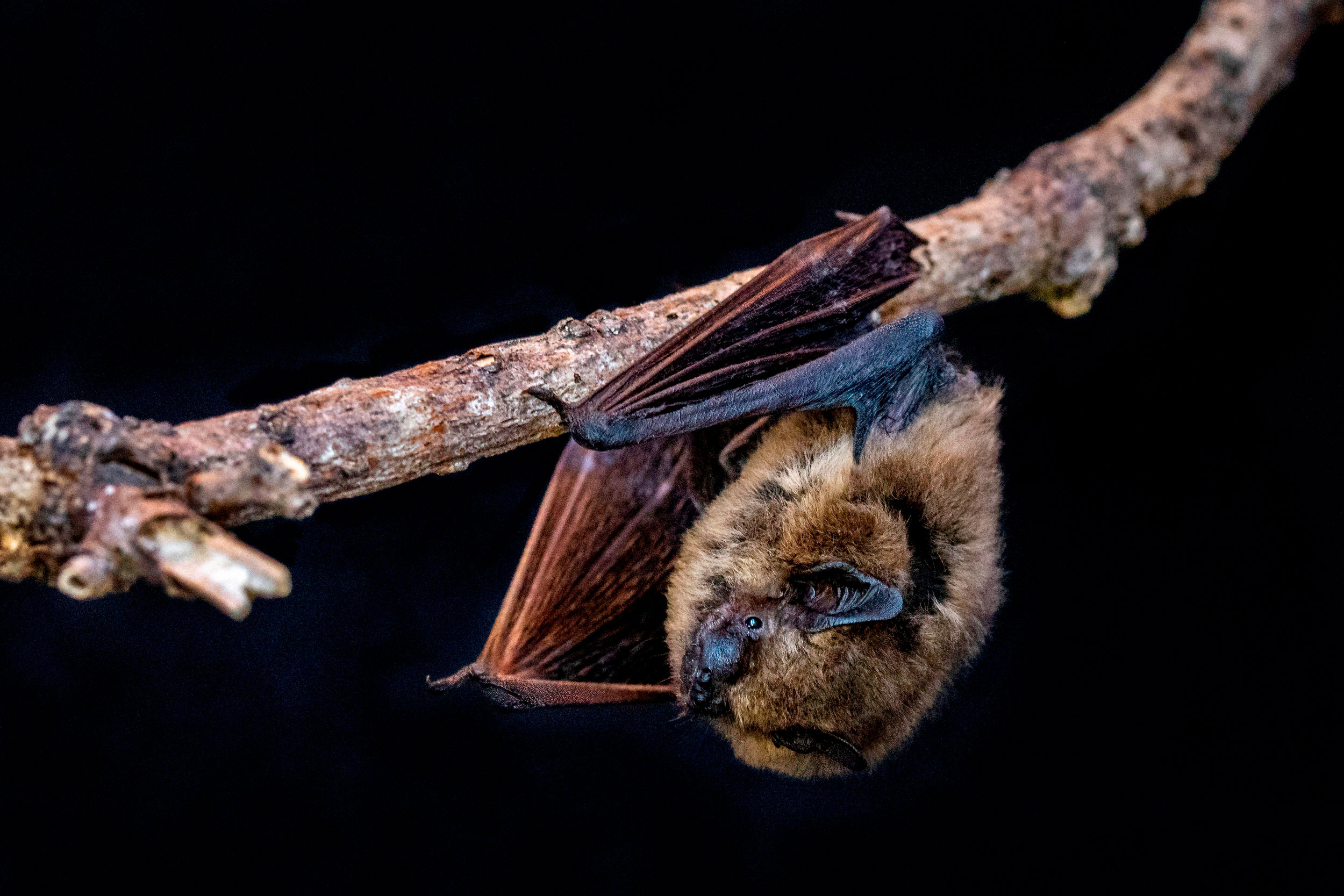Star letter: Bowled away!
Back in August, I had a rather shocking start to my day when I woke to find a live bat struggling in my toilet bowl! I firstly panicked and then, whilst talking on the telephone to my daughter, devised a plan for its safe rescue.
Both of us were aware that we should not touch the bat as only registered bat handlers are allowed to do this; so, I very carefully scooped the bat up using a cup I use to fill my bird seed feeders. I then placed the bat in a washing up bowl lined with kitchen paper, and popped the bowl in a dark corner in my garage.
The Bat Conservation Trust’s helpline gave me advice and put me in touch with a local volunteer handler who could assist and look after the bat. She identified the bat as a female Common Pipistrelle, and we were relieved to hear that she was not injured and just exhausted. We decided to call her Loo Loo.
After a few days’ rest and feeding, Loo Loo was ready for release, which we were invited to watch! Should you find yourself in a similar situation, you can find the details you need at the Bat Conservation Trust website.
Lesley Waller

This clever Woodpigeon activates the street lights to stay warm! Photo: Nigel Peckett
Heated seat!
I live in Little Haywood, near Stafford, and a Woodpigeon has learnt to sit on top of the light sensor on a street lamp on our estate. This switches the lamp on and the lamp casing gets warm. When the weather is cold it sits there for quite some time.
Whether it is the same pigeon or not I don’t know, but this has gone on for several years. I have seen this happening on at least one other lamp-post in the estate.
Nigel Peckett
Ed: This is a great example of learned behaviour! The Woodpigeon likely used the lamp as a perch some time ago and learnt that it provides warmth. Another example of this is when birds roost in car parks since such urban areas can offer more warmth compared with other habitats.

A Field Vole kept Ray company during his lunch break. Photo: Ray Scoble
Lunch companion
Yesterday morning, the Summer/Autumn issue of The RSPB Magazine arrived. I decided not to open it right away as I was going to take a walk through the Dalmeny estate which lies on the south side of the Forth Estuary between Edinburgh and South Queensferry. I had walked about halfway and was just finishing a spot of lunch when I noticed a movement in the grass next to me.
To my surprise, there was a small furry creature having its lunch beside me. It was brownish, about 3cm long and completely oblivious to my presence. I watched it for a few minutes then slowly got my camera out and managed to take a couple of photos before it headed back into the longer grass.
At the time I thought it could be a vole or, as it was not easy to see in the grass, possibly a mouse. After I got home, I opened the magazine to find the article about identifying voles and mice. So, now I can confirm that it was a Field Vole. My photos might not be the best wildlife images in the world, but who cares when one shares lunch with such a nice wee beastie.
Ray Scoble
Frame-worthy photos
When I was younger I would cut out bird photos from magazines and newspapers for ID purposes. I am now 75 and can afford the published bird guides. I have just purchased RSPB Seabirds by Marianne Taylor, what a wonderful book.
Keep up the good work, and keep putting large photos in the magazine suitable for framing. I am sure people who can’t afford the guidebooks would appreciate that.
Keith Walker
Moment of appreciation
My husband and I have just become new RSPB members after visiting RSPB Bempton Cliffs back in May. I’m not the main bird enthusiast out of the pair of us, but I couldn’t help but be impressed with your Spring/Summer 2023 edition of The RSPB Magazine.
It’s proved to be very informative; I wasn’t aware that Curlews are Red-listed and part of a rapidly declining population. It made me realise how lucky I am to see a pair of Curlews during the breeding season on my daily dog walk. I love to hear their distinctive cry as they protect their nests from predators. So, thank you for helping me understand what a precious world we live in, and I will be willing the Curlews to have a successful breeding season this year.
Jane Kelly
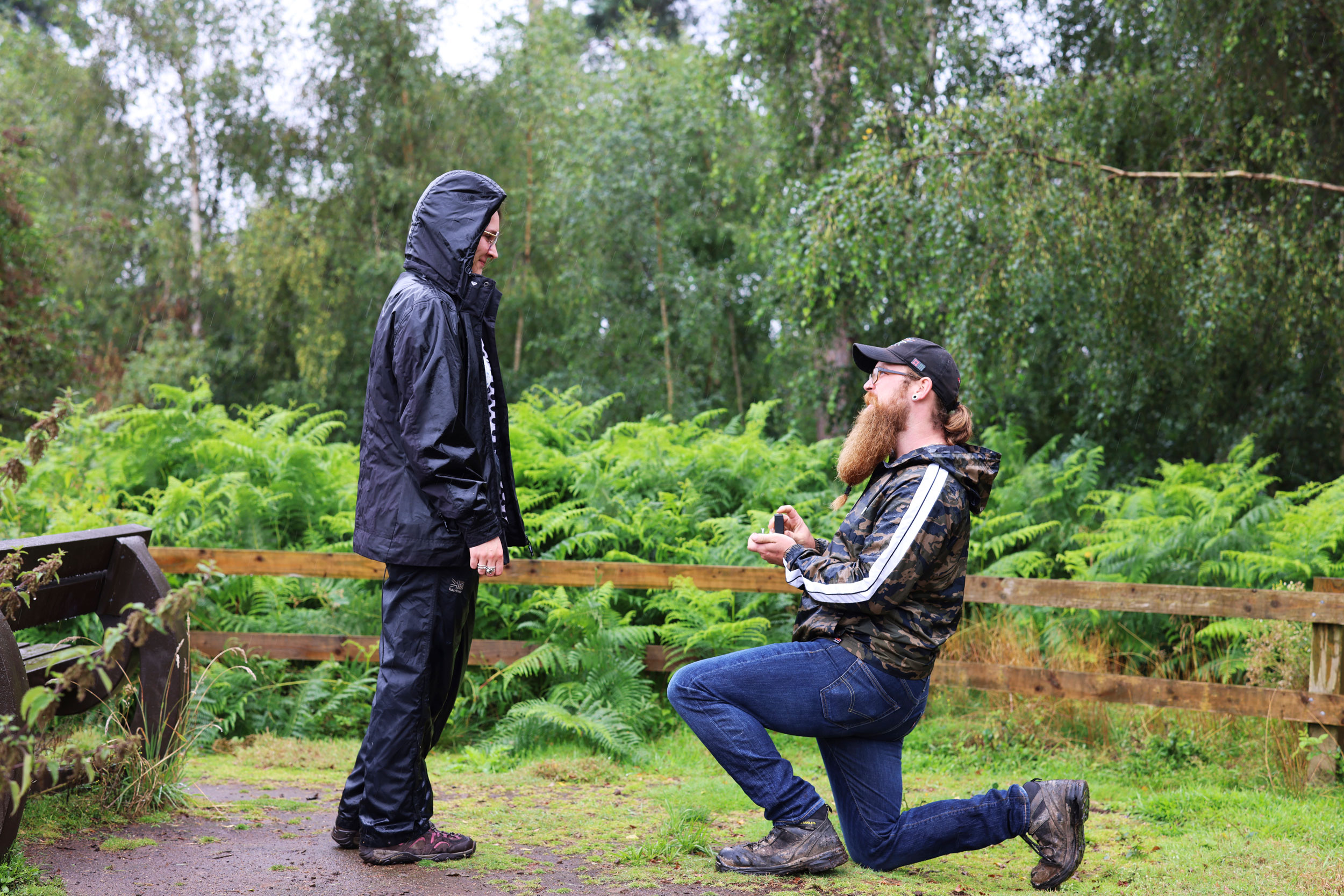
Congratulations to Alex and Siana who got engaged at our nature reserve in Sandy! Photo: Martin Thurlow
Special occasion
My son Alex proposed to his girlfriend Siana on Saturday 22 July at the Galley Hill, at RSPB The Lodge. Although it rained continually that Saturday, it did not dampen our spirits as Siana accepted. Siana and Alex also joined the RSPB during their visit. Both have a keen liking for wildlife and nature.
Martin Thurlow
Holiday highlight
Staying at one’s parents-in-law’s for a whole week may not sound like a thrilling summer holiday! However, it was just that for me this August thanks to the pair of Sparrowhawks that nested in a cedar tree visible from the bedroom my wife and I stay in. The sound of the two fledglings’ repeated calls was the backdrop to our stay.
It is the first time Sparrowhawks have nested in the garden in the 20 or so years that my parents-in-law have lived at the Oxfordshire property. Their impact on other garden visitors was interesting to see: the Magpies seem interested in the nest – perhaps hoping for scraps? – but also nervous; there was a distinct reduction in songbirds visiting the garden, and far fewer Woodpigeons.
The fledglings’ ungainly practise flights from tree to tree were a joy to watch. They didn’t seem to fear us humans and carried out their activities unhindered – including honing their hunting skills. They were curious about some of our activities: during my morning dips, they swooped over the uncovered pool.
One warm morning, a young Sparrowhawk landed on the side of the pool and proceeded to behave as if trying to take a dust bath on the sun-warmed flagstones! It peered over the edge into the pool, lost its balance, and was narrowly saved from joining me for a dip by frantically flapping its wings! It was an absolute privilege to be so close to such magnificent birds finding their wings in the world!
Lucy Walker-Mitchell
Returning visitor
We think that the female Blackbird in our garden last year returned to us this year. This may be wishful thinking, but it seemed that she recognised us and would make a tutting noise to tell us that the dish of calciworms needed filling up! She has been very accepting of our presence pretty close to the feeding station. We ‘tut’ back to her when food is filled back up and she comes straight back to it either to feed herself or fill her beak up and take it to her chicks.
Last year she had three clutches of chicks. This year she has had four clutches! Both years the nest has been built in the same place.
Alas we are now sad in a way, as she has gone off elsewhere. But what a remarkable mum she has been! We have felt so privileged to have been able to assist her to have such a successful breeding time.
I hope others have had a similar experience. We will now spend our time watching the Hedgehogs on their trips to their feeding stations in the garden. Isn’t nature wonderful!
Sue Welch
Changing diet
For many years our nest box has been used by Blue Tits. This year, however, we were amazed to see the adults coming to our sunflower seed holders to take seeds to the young. My wife and I thought that if this continued the young would not know they were supposed to eat caterpillars and other insects.
The young Blue Tits then came to the seeds regularly, and now we also have a Robin coming for seeds. We do not use insecticides and have nettles and long grass, but we have only seen one caterpillar in the garden. The only aphids have been the big blue Lupin Aphids, which birds have never touched. This is a very worrying trend.
David Gibbons
Ed: Climate change may alter the timing of caterpillar availability that would normally coincide with Blue Tits hatching. Adult birds may therefore choose an alternative food source, such as the sunflower seeds, to feed their young. Fledglings remain with their parents for a few weeks and will naturally learn where to find different food sources.
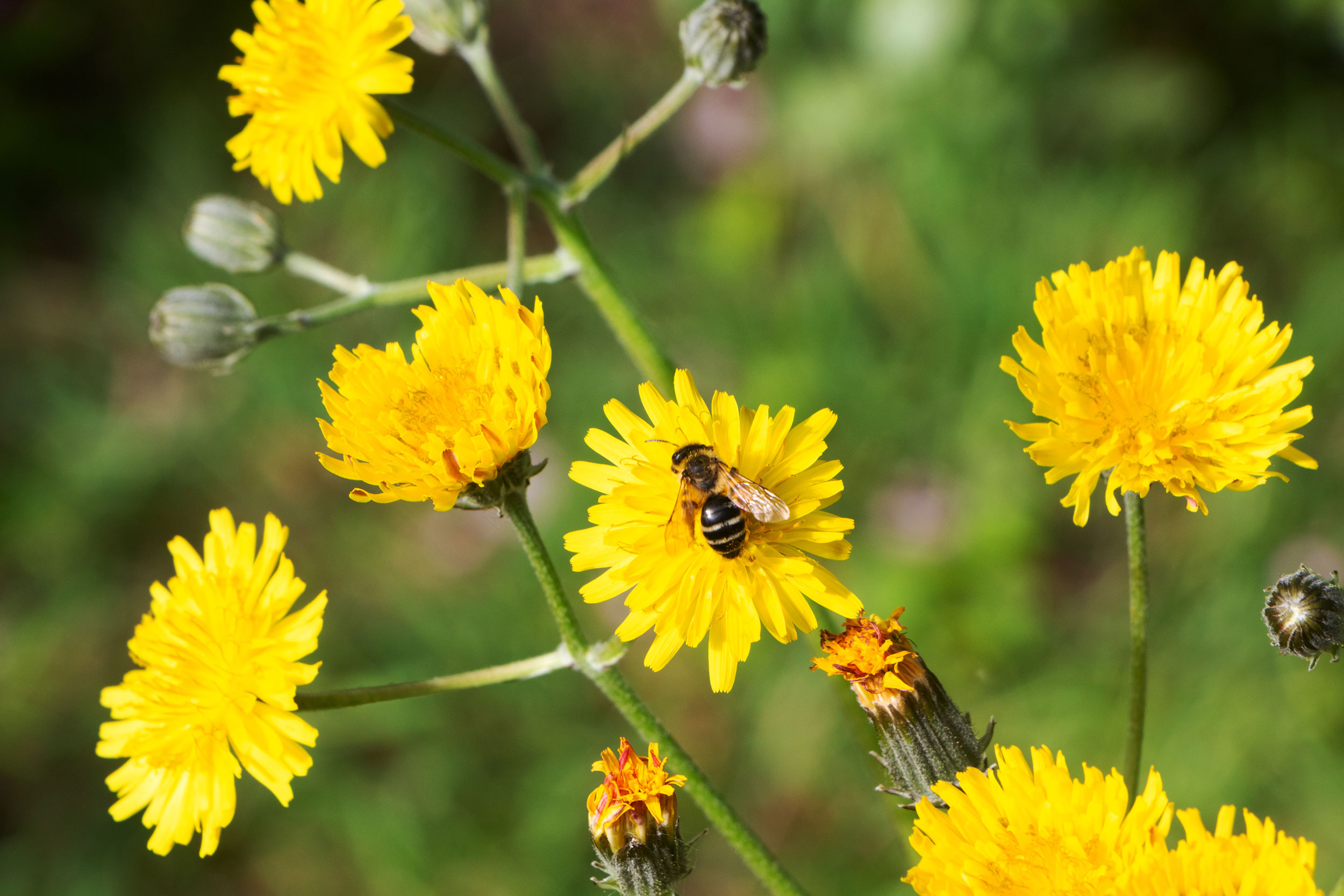
Yellow-legged Mining-Bee. Photo: oceane2508 (Getty Images)
Growing wild
Two years ago I felt my rural garden was getting a bit much for me and decided to change my tidy garden for one that wildlife would enjoy more. I stopped the regular pruning and removal of plants in the ‘wrong place’. I increased the areas of long grass, allowed plants to seed where they wanted to and even resisted pulling up dandelions and leaving them for the bees. We’ve always had lots of birds in the garden, but now they are everywhere, pecking at the long grass seeds, berries and dead flower heads which would previously have been cut down.
In spring, the hum of bees is constant and tiny moths and butterflies hover over the grass. The extra ground cover is home to young hares and to voles which could be the reason for catching a Tawny Owl on the night camera recently. I would recommend being less tidy in the garden because the result is wonderful.
Linda El-Ghorr
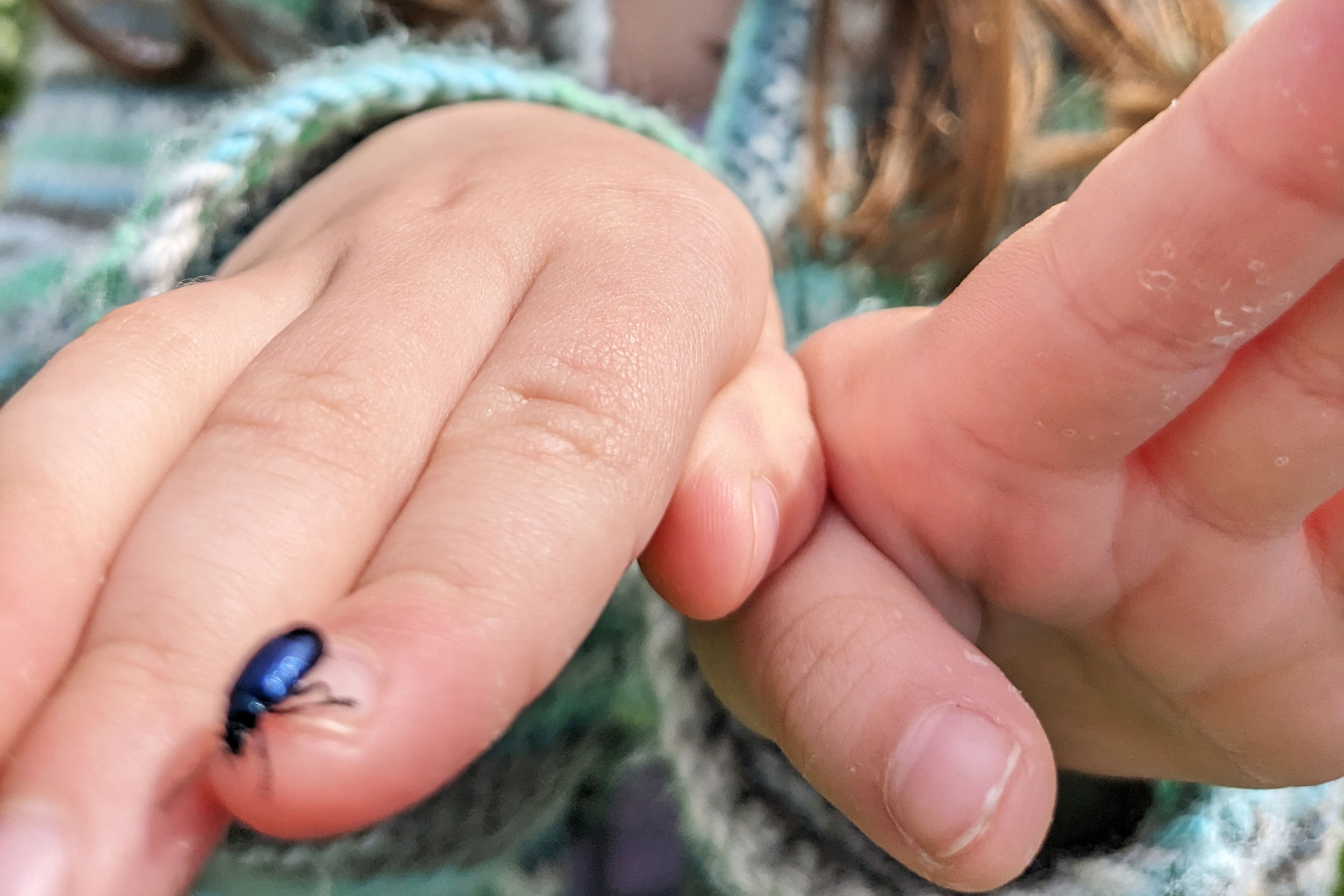
Ivy proudly shows a beetle she has found. Photo: Arlene Robinson
Starting early
We thought we’d share a few photos with you of our little wildlife-friendly garden in North Somerset. It’s a typical smallish suburban garden, and when we first moved in there was only a lawn and gravel!
My four-year-old daughter, Ivy, is a keen gardener and she loves animals; her two-year-old sister is following in her footsteps.
As well as garden birds, we’ve had toads, frogs, Slow-worms, resident Hedgehogs and a resident mouse (both live in the Hedgehog house and we caught them on the wildlife camera).
We’re also lucky to have lots of creepy crawlies. It shows what can be achieved whilst keeping things fun for the kids and the family.
Arlene Robinson

Have your say
Send us your letters. The star letter wins a pair of RSPB 8×32 Avocet binoculars from our Viking Optical range. Waterproof, nitrogen-filled and robust. Send your letters to RSPBmagazine@rspb.org.uk.
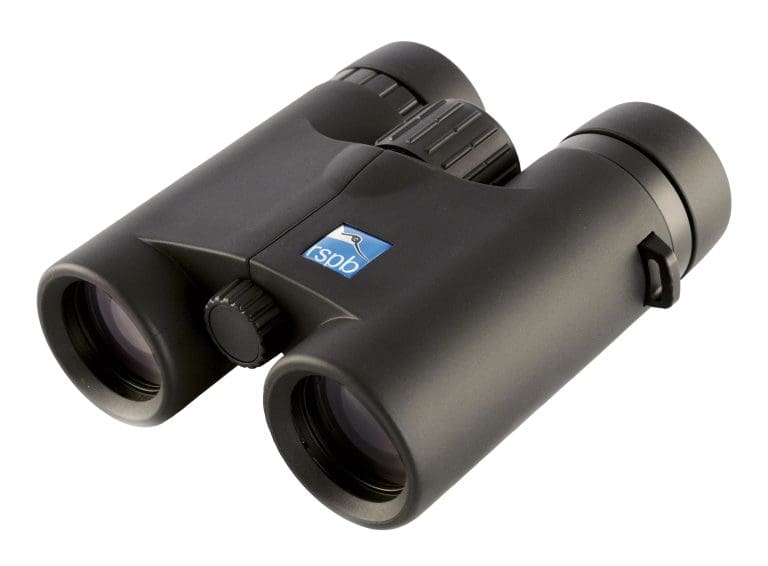
Listen to this feature here:
You might also like

Your questions – winter 2023/spring 2024
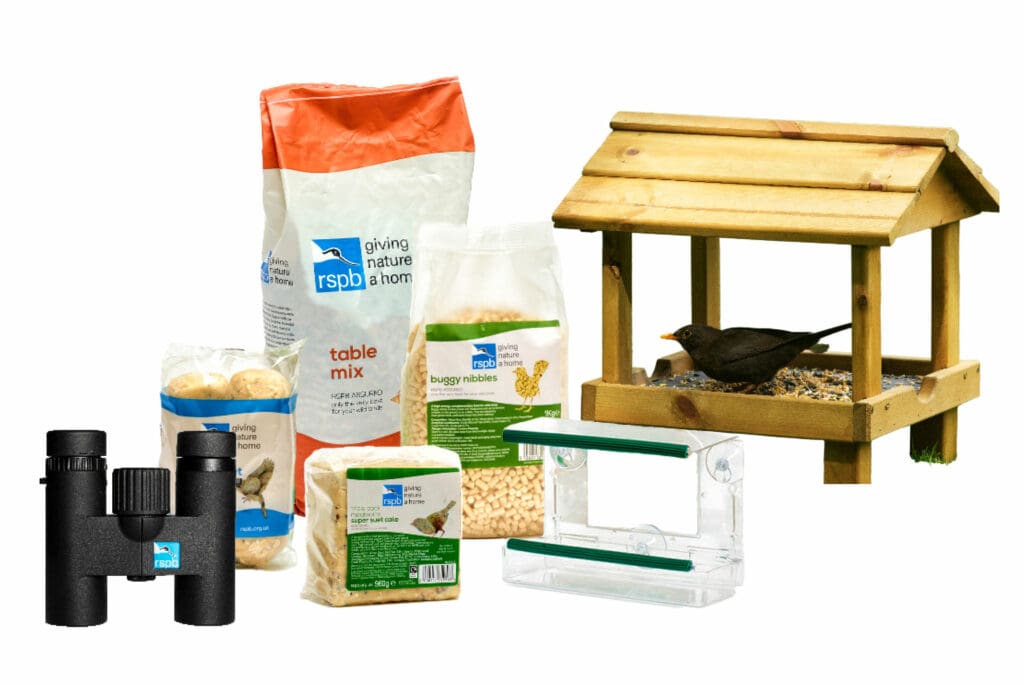
Shop for the Big Garden Birdwatch
